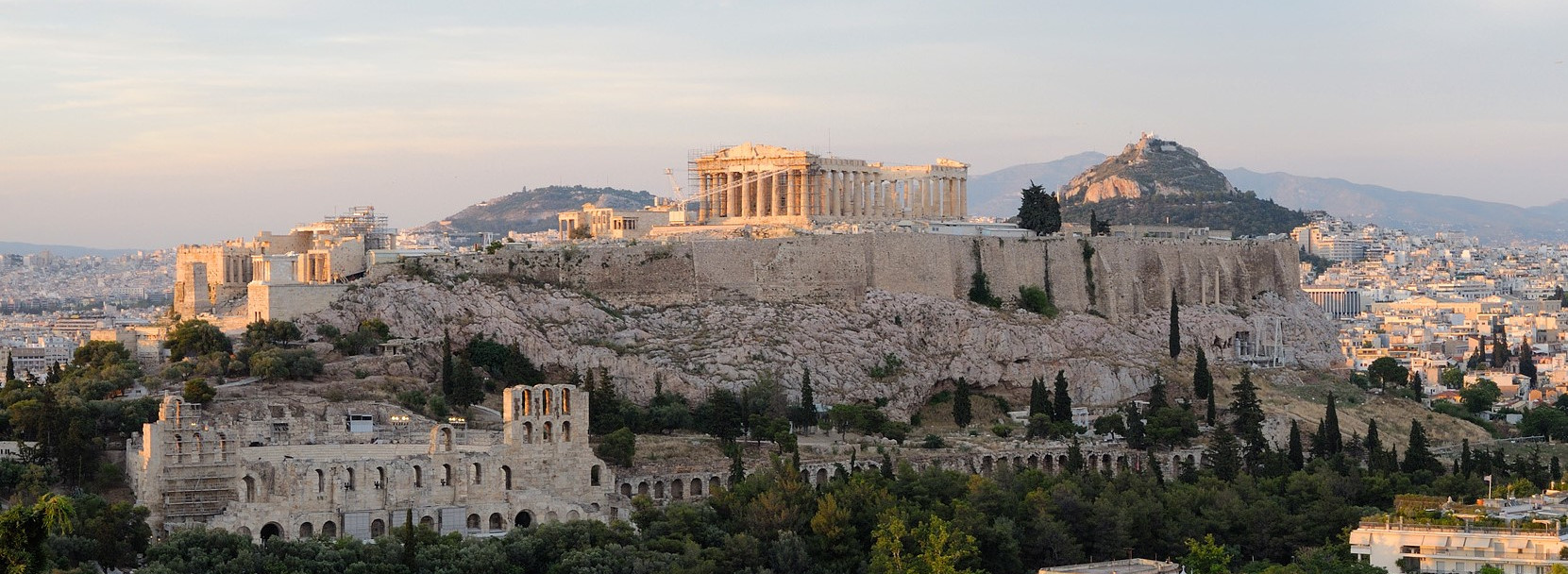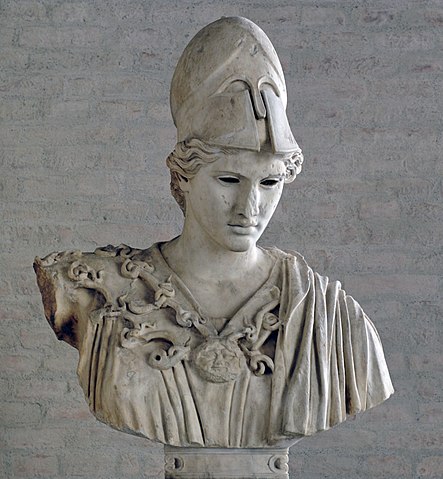

As part of your Higher Classical Studies exam, you will answer questions about Athens in the 5th Century BCE. This period was known as Athens' Golden Age: Athenian philosophy, art and culture was at its peak. Athens was one of the world's first democracies during the 5th Century, and it also became a large imperial power.
You may choose to study either Power and Freedom or Religion and Belief. This website will focus on Power and Freedom. You will study five aspects of Ancient Athenian Power and Freedom: Citizenship and Democracy, the Legal System, Slavery, Women in Athens and the Delian League. You will be asked to answer questions on these aspects of Athens; for more information about question types, visit the Exam Skills section.
You will not be tested on the information in this introduction, however it should allow you to have a more complete understanding of this section of the course.
The term "Ancient Greece" can be misleading, because it implies that everyone within Ancient Greece was unified. However, this was far from the case. There were hundreds of poleis, or self-governing towns, in Ancient Greece. These poleis often often had very different styles of government, and were often at war with one another. However, they were unified in that most poleis shared the same language and the same religion. Furthermore, there is evidence to suggest that the Ancient Greeks did occasionally think of themselves as a group: they worked together to defeat the Persians by forming the Delian League, as you will learn about later, and there were words that Ancient Greeks used to describe themselves, such as the "Hellenes". Nevertheless, quality of life in one polis was likely drastically different from that in a different polis, and it is important to remember these distinctions. You will be learning about Ancient Athens, and not all that you will learn is true of other poleis such as Sparta.
How did Ancient Greeks of different poleis differ?
How were Ancient Greeks of different poleis similar?
Athens's founding myth explains how the polis got its name. Athena, god of wisdom, and Poseidon, god of the ocean, were competing over who would be the patron god of the city. They decided that each would present a gift to the Athenian people, and the giver of whichever gift the people liked most would win. Poseidon struck his trident into the ground and from it sprung a stream of water. Poseidon assured the people that under his protection they would never suffer from drought. However, the people were not impressed, as the water tasted salty, like water from the oceans that Poseidon presided over.
Next went Athena. She dropped a seed into the ground, and from it sprung a large tree. Athena explained that the olives from the tree could be pressed to make olive oil. Olive oil could be added to food, used to burn candles and had healing properties. The wood from the olive tree could also be burned as firewood. The people were very pleased with the gift, so they took Athena as their patron god and Athens was named after her. This is an interesting myth because it implies Athens held knowledge and wisdom in high regard (since Athena was goddess of wisdom). Indeed, Athens became a powerhouse of philosophy, science and learning.

It is important that you understand the difference between Athens and Attica. Athens was a small, self-governed city. Attica was a larger geographical region which included Athens and a number of other self-governing cities, such as Marathon and Eleusis. By the 7th Century BCE, however, Athens had invaded and assumed full control of the entirety of Attica.

At an early date, Athens replaced its tyrants (rulers with absolute power, like monarchs) with Archons, who were members of the aristocracy. At the start, Archons were in power for life, then certain reforms meant they served for a shorter period of time. Archons were chosen by the Areopagus, a council of members of the aristocracy. Therefore, at this time Athens was an oligarchy, ruled by the social elite.
The time for change came in the late 7th Century, when a severe economic crisis meant many poor people were forced into slavery because of the debt they had accumulated. This led to severe unrest and the potential for revolution. To curb this threat, Solon, who had been elected Archon, made a number of reforms. He cancelled all debt and banned debt slavery as well as encouraging the economy. He also reduced the role of the aristocratic Areopagus and gave more power to the newly-created council of 400, which consisted of ordinary people. Furthermore, he created the Heliaea (jury-courts). Every citizen was eligible to serve in the Heliaea, and every citizen could take a case to court. At the end of their term in office, every magistrate had to appear before a Heliaea to be held accountable for their actions. Therefore, Solon made the system significantly more democratic.

Athenian democracy was interrupted when the Archon Peisistratus forcefully took power and ruled as a tyrant. However, once he had died and his two sons, who inherited his power after his death, had been either assassinated or forced to flee from Athens, a man called Cleisthenes became Archon. Cleisthenes was determined to return democracy to Athens, and reformed it into the system you will learn about in this section of Classical Studies. Notably, he changed the four tribes that previously made up Athens into ten, created the Council of 500, and made the Archons less important.
Why did Athens become a democracy?